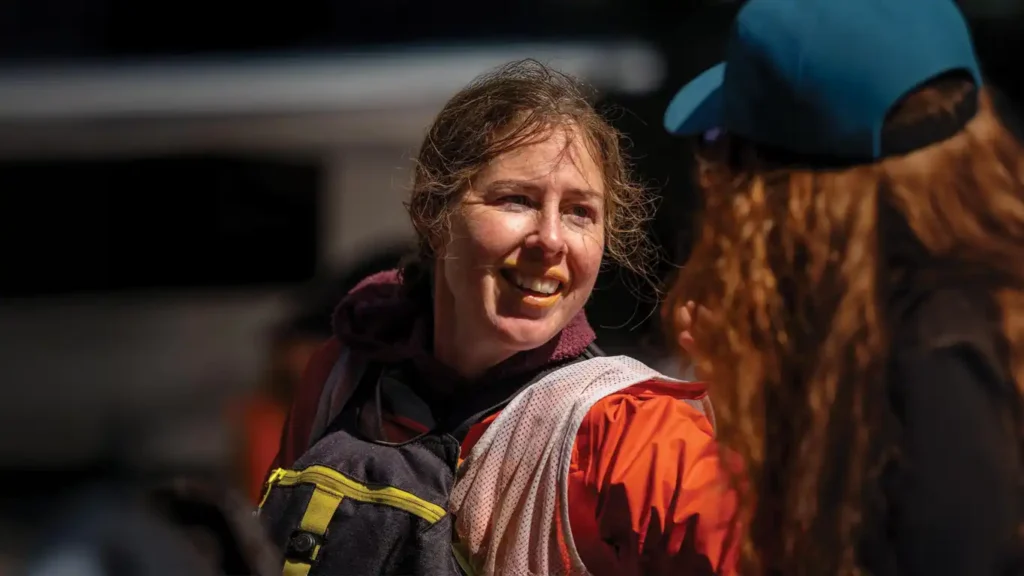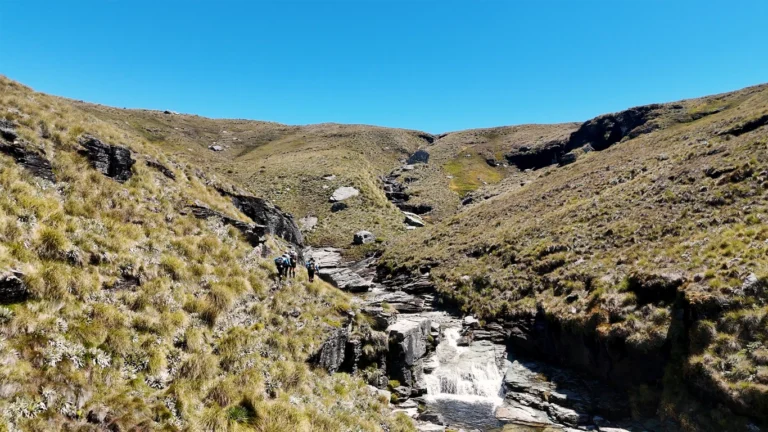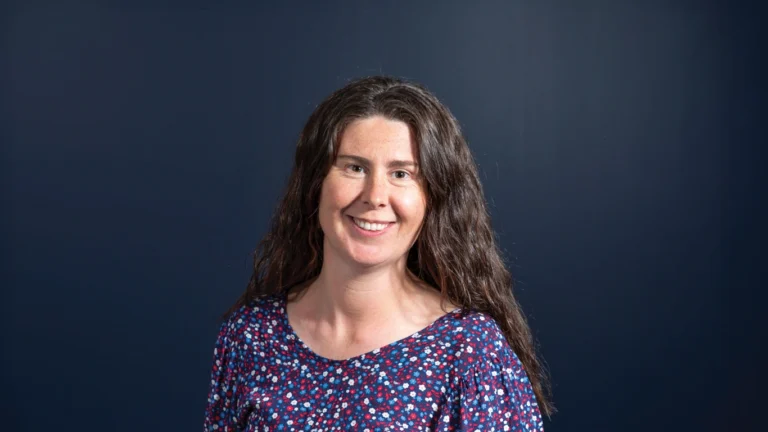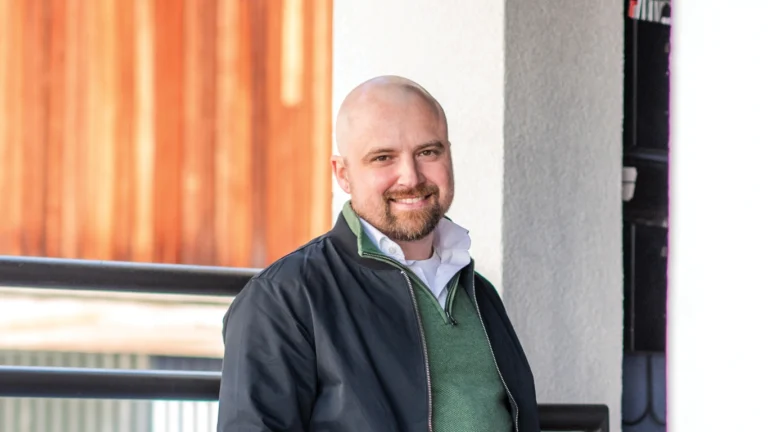
In late January, Josie and her team-mates won the gruelling MAGNIficent expedition race, part of the 2025 Adventure Racing World Series, which took place in the lower South Island of NZ. We caught up with her to learn more about her passion for the sport, and how she juggles it alongside a busy in-house legal career.
InView: What is your background in sport?
Josie Norris: Growing up, I wouldn’t have called myself sporty. I dabbled in netball and touch rugby, but I didn’t have good eye-ball coordination. However, I was disciplined. I danced three to four times a week during my teenage and university years, so I was used to being physical and having the mental fortitude to get through trainings. I started long-distance running when I returned to Christchurch.
Adventure racing is a big leap from dancing. It’s such a tough sport and obviously hard work. What’s the attraction for you?
It is hard work, which is part of the appeal for me. While an outside perspective is that adventure racers trek, mountain bike and kayak their way across beautiful natural landscapes, the more interesting part of racing is being one of four individuals who come together and race as a team. Within that, you are managing each other’s physical, emotional and mental needs and trying to support each other. There’s a lot of strategy in doing that to get everyone to the finish line. Also, the racing itself is strategic: the objective is to navigate from point to point using a compass and map as efficiently as possible. It’s fun – adventure racers love a topo (topographical) map – and we’re all map nerds.
Depending on the race, we receive our maps anywhere from three to 24 hours before the start, which is both exciting and nerve-wracking. The races are long – three to five days – and because we have limited information to work with, we’ve got to manage our stress and anxiety. Coping with uncertainty and having the ability to adapt and change tack at the last minute based on what little information we do have is vital.
The physical stuff is great, it gives you an endorphin high, but it’s the other parts of the racing that are more interesting to me. As a team, we always say the first goal is getting everyone to the start line as prepared as possible, and the stretch goal is getting to the end.

Do you always race as part of a team?
I participate in the Adventure Racing World Series, and its mandated rules state that teams must be of four people and mixed gender. I’m part of a three-man, one-woman team, Team Sardine Racing. Each team member has designated roles. The lead navigator is in charge of route choices, the captain makes any overarching decisions, and the packhorse is usually physically very strong and might carry more gear than the rest of us. In our team, I’m the stoker/motivator.
Can you explain the format for adventure racing and the makeup of a race?
Racers typically navigate towards a common checkpoint, but each race has specific guidelines and formats. The majority of racers take the most efficient route, although certain sections of the course, such as river sections where there’s only one way to go, are fixed. Some races also introduce unique challenges like rock climbing, abseiling, or caving, which require participants to complete specific tasks to move forward.
Races are typically divided into stages, each focused on a different activity. At the end of each stage, teams transition to the next discipline, and during these transitions, racers get access to pre-packed boxes containing things like food, dry clothing, and medical supplies.
Usually, we only carry the specific gear needed for each stage, such as survival equipment, and don’t have to worry about carrying everything for the entire race. This structure of transitioning between stages and adapting to different physical and mental challenges is a major part of what makes adventure racing so demanding and exciting.
Is there any discipline you enjoy more than the others?
Because my background is running, for me the most exciting stages are the ones that involve hiking. They’re usually the most strategic stages, and the ones in which you have the most opportunity to make different decisions about which route to take.
“The New Zealand wilderness is where our team excels. We are good on our feet, we move really well together.”
I love being in the native bush. In New Zealand we often get to be in beautiful natural or wilderness areas. That’s where our team excels. We are good on our feet, we move really well together.
What are the most memorable races you’ve competed in?
It would have to be the first 48-hour race our team competed in. Before we entered the race, we had no idea how we would get on, then during it we had points of failure. We made a significant error in our navigation, we tore our pack raft (inflatable boat), and we’d fallen off the pace of the majority of the field. But I remember the four of us hooting and hollering on our bike ride to the finish line because we were so elated that we managed to complete the race. We’d enjoyed ourselves despite the struggles and we’d pulled together as a team even in the face of what felt like everything going wrong. We finished the race, which was our stated objective. It was an incredible feeling. I remember thinking, I can actually achieve something which I didn’t know was possible when I started.
Last year, we raced in America’s Toughest Race in Oregon. It was an amazing, exciting experience. It was a six-day race which we completed in just under four days. We exceeded our own expectations and finished third equal with another New Zealand team.
Has participating in adventure racing changed how you feel about yourself?
Yes, I’ve become a more confident person. I have learned to have more confidence in my own ability, trusting my intuition and instincts about what I need and want to do. Those skills have translated into other areas of my life as well.
What has adventure racing taught you that helps you in your career?
The soft skills you learn in adventure racing are very transferable. The teamwork in racing is important as it’ll make or break a team – how well they communicate during a race and in the overall outcome. With our team, we talked a lot about how we would communicate as a group and from those discussions I got some valuable learnings that I apply at work. Learning how you need to communicate, because communication for each person is quite different. Learning how to remain calm and being able to continue to problem- solve or think clearly when you’re under pressure – because during racing you’re sleep deprived and often haven’t had access to a proper meal, and you’re running on fumes.
But you can’t throw a wobbly. You have to hold yourself together and show up for the team.


